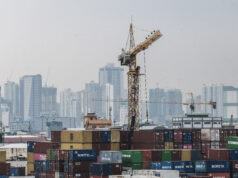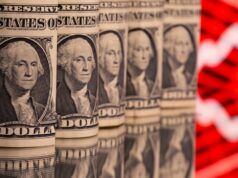Poll bares outlook of slower Dec. inflation
By Melissa Luz T. Lopez
Senior Reporter
INFLATION likely eased further in December as fuel and food costs continued to ease, analysts said in a BusinessWorld poll, even as some flagged that a spike in demand during Christmas may have buoyed prices.
A poll among seven economists yielded a median estimate of 5.7% for last month, which if realized will be slower than November’s six percent and would mark the second straight drop in headline inflation. The rate likewise falls within the 5.2-6% estimate range given by the Bangko Sentral ng Pilipinas (BSP) last week, but would be higher than the 2.9% clocked in December 2017.

“Food prices probably declined the biggest. However, the Christmas demand also might have continued the upward pressure on food prices,” said Ruben Carlo O. Asuncion, chief economist at the Union Bank of the Philippines.
Mr. Asuncion gave a 5.7% estimate, which he deemed “still elevated”, to factor in the seasonal increase in prices as demand surges over the holidays when Filipinos indulge in Christmas and the New Year feasts.
The Philippine Statistics Authority is scheduled to report December inflation data on Friday.
November inflation eased from a nine-year-highs 6.7% in September and October, with central bank officials noting that prices have peaked and should be on the way down into this year.
Prices have risen by an average of 5.2% so far in 2018, matching the full-year forecast of the central bank but still hovering above an official 2-4% target range.
The BSP said a “continued decline” in petroleum and food prices will drive commodity prices down, together with the P1 rollback in minimum jeepney fares in Metro Manila, as well as central and southern Luzon.
A slightly stronger peso versus the dollar also helped reduce import costs of goods from abroad.
Michael L. Ricafort, economist from the Rizal Commercial Banking Corp. (RCBC), pointed out that global oil prices have lately been hitting their lowest point in over a year despite production cuts announced by oil-producing nations.
Alvin P. Ang, economics professor at the Ateneo de Manila University, noted that Christmas-related activities may have also bumped up costs for household furnishings, restaurant and communication, which all form part of the consumer basket used to measure year-on-year inflation.
Most of the economists polled shared the view that the worst may be over for inflation, with more growing confident that the rate will return to below four percent this year.
“Inflation has indeed peaked already and has started its easing trend, especially if the rice tariffication and other non-monetary measures to improve local food supply and lower local food prices are implemented and become effective in further lowering inflation,” RCBC’s Mr. Ricafort added, referring to an impending law that will impose a regular tariff scheme on imported rice from the current quota system and which is expected to slash retail prices of the staple by P7 per kilogram and overall inflation by 0.7-0.8 percentage point.
He said he now expects inflation to move back on target as early as the end of this quarter.
BSP officials have grown more confident about cooler prices in 2019 with receding world crude prices and with food supply normalizing. The Monetary Board slashed its 2019 inflation forecast to 3.2% from 3.5% in its Dec. 13 meeting.
But not everyone is convinced.
HSBC Global Research economists said prices could still pick up. “[C]ore prices remain elevated on both a yearly and sequential basis, which suggests building demand-side pressures on inflation. Near-term inflation risks remain tilted to the upside, given a scheduled increase in excise taxes on 1 January 2019.”
Excise taxes on fuel will rise by another P2 per liter this year, on top of the P2.50/liter increase on Jan. 1, 2018 as Republic Act No. 10963, or the Tax Reform for Acceleration and Inclusion Act, took effect.
The central bank kept interest rates unchanged last month, capping five consecutive hikes in 2018 that brought the benchmark rate ti a nine-year-high 4.75%.
Some analysts believe the BSP can keep monetary policy changes on hold for now, although others cited the need to keep local yields competitive through further rate increases.
The BSP will review policy settings for the first time this year on Feb. 7.



